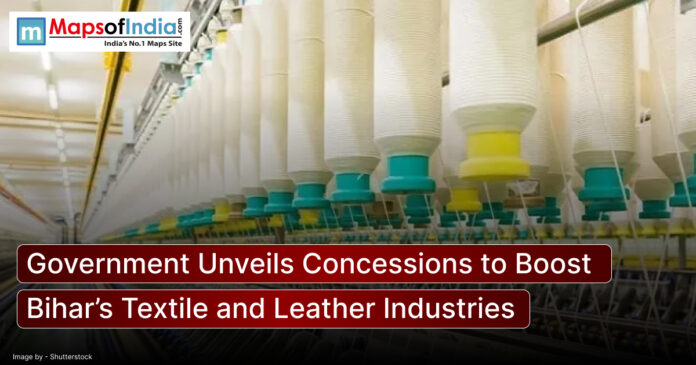Bihar is now geared to write another chapter in the economic history of the state as it aspires to go beyond its identity as a state of farmers and to emerge as the textile and leather industry hub in the country. As a state, it is keen to establish a new identity on the Indian industrial map through a dedicated industrial policy and the various incentives it has put across to attract large-scale investment and create employment.
The government has come through with a line of concessions through its Textile and Leather Policy to lure entrepreneurs and investors. These involve subsidies provided on capital to the tune of a few crores, subsidies in power tariffs, freight rebates and tax exemptions. The policy will grant backup on skills development and training in addition to financial grants, so that the local workforce can meet the needs of modern manufacturing. The aim is to establish an environment in which industries not only establish their plants but also compete successfully.
Chief Minister Nitish Kumar put it emphatically that it is time Bihar entered the new economic era. He emphasized the fact that agriculture has been and will continue to be the greatest strength of the state, but in a bid to see sustainable growth and also to provide employment opportunities to the youth, the state should diversify into other kinds of industries, which would also be involved in large-scale employment. The textile and the leather industries, which are characterized by being labour-intensive, have been selected as priority areas to ensure maximum creation of employment.
On the ground, improvement can already be seen. A new bag manufacturing plant in the Bela Industrial Area of the Muzaffarpur District (Muzaffarpur) was also inaugurated, which is an important step forward in the process of implementation of the policy. It has been created with an investment of a few crores and is estimated to offer direct employment to hundreds of workers as well as the ancillary industries in the area. The Government is also coming up with leather product parks and textile clusters to further establish the industrial base of Bihar.
They feel that an amalgamation of policies, development of infrastructure and the availability of a large source of skilled manpower would be able to make Bihar compete with other traditional textile and leather centres within other parts of the country. Industrial delegations of Bihar have also visited better-performing states such as Tamil Nadu to consider adopting modern and sustainable processing methods.
The project promises a decisive change in the thinking of the state in Bihar, where it is perceived more as an agricultural state than as a state with an industrial hub. Provided the plan has been successful, Bihar may one day be known not only as the land of fertility but also of the textile and leather industry, expanding to a new dawn in the area of opportunity amongst its people.










